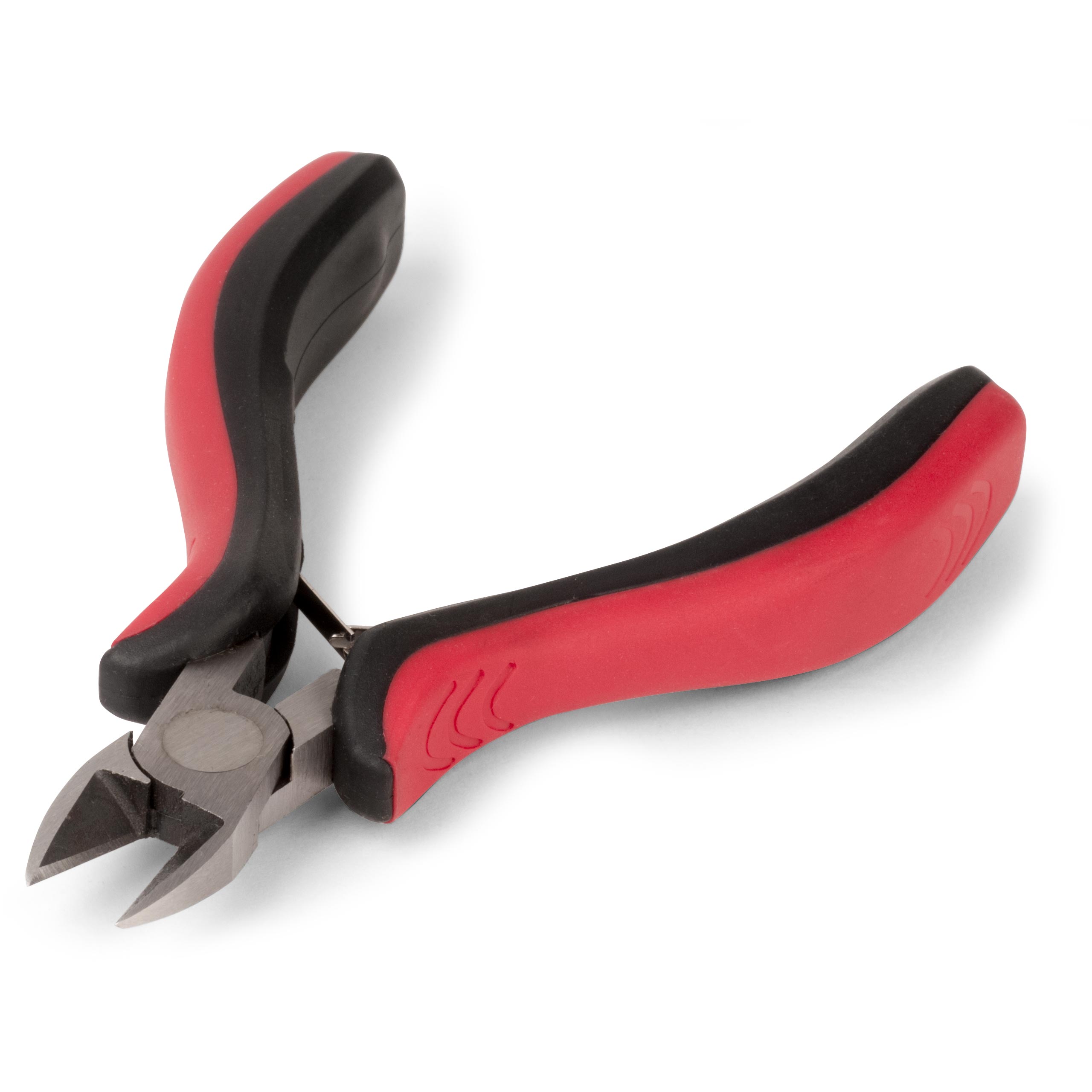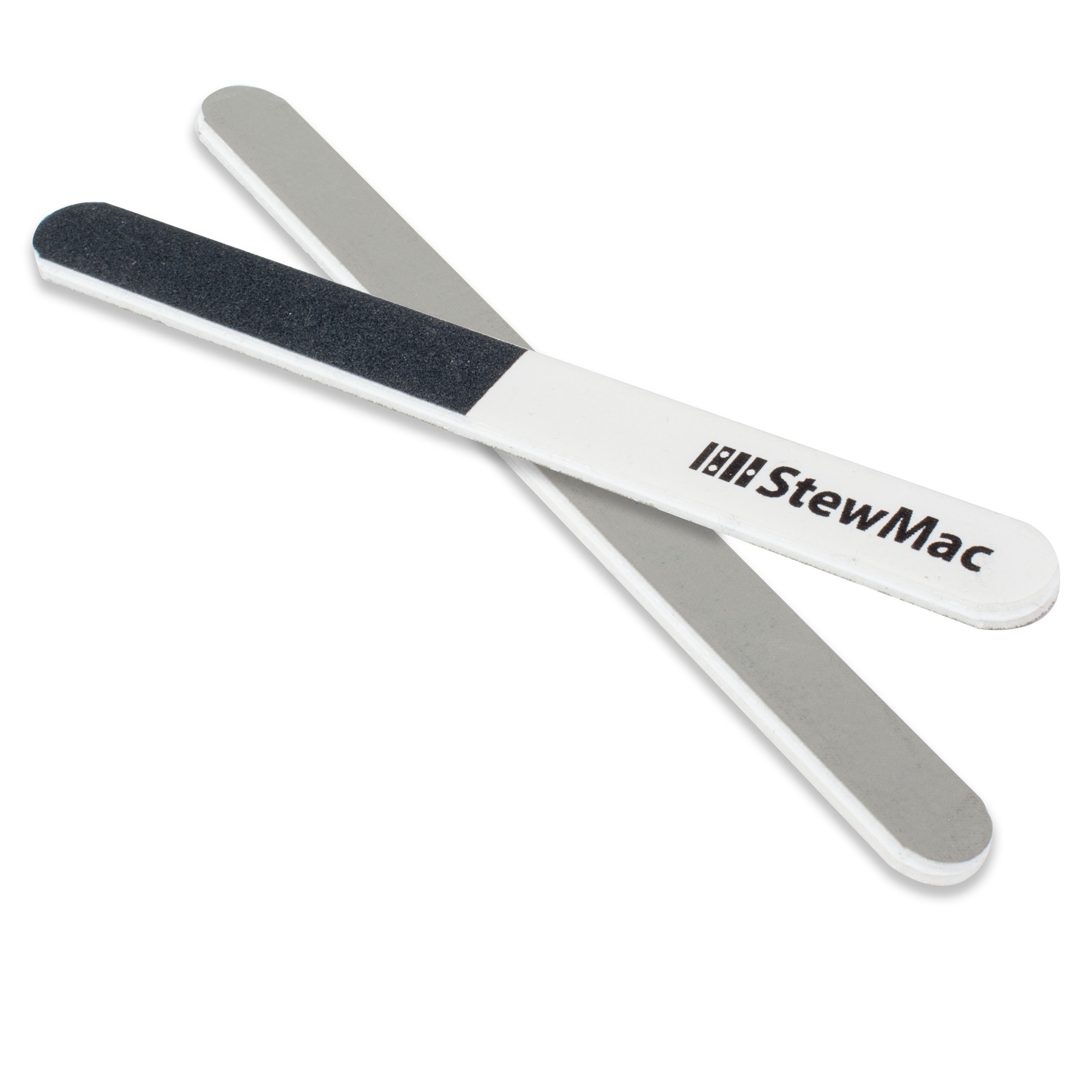Evan Gluck: pro guitar repairs in a very small shop
Issue 278 January 26, 2017
New York Guitar Repair is a one-man shop, operated by Evan Gluck. Evan serves a steady stream of customers, working out of his apartment on New York’s Upper West Side. Check out his super-efficient setup!
In this Trade Secrets video:
- Erlewine ShopStand in a NYC apartment, with no floor mounting holes!
- Which tools have earned a permanent place on Evan’s workbench?
- A dresser and tabletop make a great workbench
- Evan’s surprising twist on installing guitar strings
Video Transcription
[on-screen text reads: Pro guitar repairs in a tiny shop - StewMac]
Evan Gluck: Hi, I'm Evan Gluck and I run New York Guitar Repair in New York City, on the upper west side and I've been actually working out of my home for the last 13 years and if you decide to do that and you decide to have a shop that is not in a designated work area, I seemed to have figured out a really great way to do it. Just sort of improvising with different things. So for example, this bench was a chest of drawers that my wife had in her bedroom and then one night on Passover, we had the whole family over and I saw this tabletop that had two pieces in leaves out in the trash. So I said, excuse myself on the table and ran out and got these things and then I put it on a couple of risers so that it gave me a little more lift, a wider surface, and it gave me another shelf. So if I need to say, take a truss rod tool out, it's right here.
Tips and tricks for working in a really small shop
It puts it up at a right height, it's rock solid, I could drill into it if I want to. So this has been working and then I have this vice here cause I do most of my work on it's a StewMac ShopStand. And this guy is one of the little Rock-n-Roller Neck Rest that I put some leather on because I was going to use it really as my main support. So I just nailed some leather in here. And what it lets me do is put it in here, angle it sort of as if it was on the floor, but angle it at any level and also any height [on-screen text reads: Guitar Repair Vise - stewmac.com] because I can sink it, I can raise it, I can do whatever I want with it. And for a long time I had sandbags on it, since I can't actually nail this thing to the floor because essentially it'll just pull up the hardwood floors and it's New York.
So a hundred thousand rats will jump out. What I needed to do was figure out a way just to keep this down. And so I was fixing some of these guitar guy named David, and David said to me, Hey Evan, do you ever think of a better way to do that? And I was like, no David, I haven't. So I thought about it and I took the band clamps that came with the StewMac Neck Jig. So I actually can plant this thing to the bench itself [on-screen text reads: Erlewine ShopStand - stewmac.com]. So it becomes this rock solid one piece that literally this just doesn't move unless I really force it.
Organized and ergonomic tool bench
All right. So one thing that I sort of developed around here is just having a very organized and ergonomic way of where my tools are placed. It takes a specific tool to have the honor being on my bench. And what that means is it's a tool that I will use for every single guitar, basically.
So unless it's a Steinberger, I'm going to use this peg winder. So this gets this thing on the bench. If it's got a bone nut, I'm going to Polish it with this [on-screen text reads: Micro-Mesh Touch Up Stick - stewmac.com]. So this gets to stay on the bench. When I'm oiling a fretboard, this stuff gets to stay on the bench [on-screen text reads: Fretboard Finishing Oil - stewmac.com]. If I'm scraping a fretboard, these very dull razor blades are what I use. So this gets to stay on the bench. I use a little WD 40 in this little pipette thing that Elliot actually showed me how to do, which was just put a little whip tip inside a cut pipette. And then you can just fill it up with whatever you want and put that in there. Everything here is really just specific for what I would use on every guitar, rather than just having a bench full of crap that could hit the guitar or damage the guitar.
The importance of tool location and keeping a bench clear
There's not a screwdriver on my bench, there's not a wrench, there's not pliers, there's not string cutters. Speaking of string cutters, there's a tragic event at New York Guitar Repair a couple of months ago. This string cutter cut the strings off of probably 17,700 guitars since I opened. I bought it at the hardware store across the street for probably four or five bucks. And John Patitucci, the amazing bass player came in and on his low B string, it stopped being a functional tool. So the next day I ordered this, which is the StewMac version of this and this thing is so much better than this thing ever was [on-screen text reads: String Cutter - stewmac.com]. I wished Patituci had come in earlier, because I love this thing to death. This is great. So while I'm emotionally attached to this thing, I'm glad it's dead. Now if this guitar let's say had a high fret, I could just reach around here, get my fret hammer, get nice little spinal twist, which is good for your back.
Get the fret setter and wherever it is, just pop it in there and not leave the tools on my bench [on-screen text reads: Fretting Hammer - stewmac.com]. When I put the guitar back, it is so important to me to just get everything back. And I don't know if you realize what you're looking at here is, there is not a single opportunity for me to bring a tool over the instrument. I am never in the position where I'm going to drop a tool on the guitar because all of my tools are behind me. If I have a high nut, the B string, I can just go in here and do it. This I would stand for, but go like that, put the nut file back.
So there's nothing that's ever really going to damage the guitar as I'm working on it and that to me is, it's the thing that comes up.
Was this mark here before I dropped the guitar off and I never want to be in the position to sort of say, I'm not sure. I want to be just absolutely certain that I did not damage the guitar when it's in my shop, this is called trade secrets. So I figured that if I was going to show people something that I do that I don't think anyone else does, I think this would be it. And it's something that you do every single day so you might as well make that fancy. I can do the most amazing repair in front of somebody and when I do this, this is the only thing that makes them go, wow. So here we go. I'm going to change the string.
Evan's string change trade secret
I'm doing it plugged in, because it will sound like bugs bunny for our [inaudible 00:05:34] when I turn this up. Here's the way I do it. I use the drill to keep repetitive stress down. And then rather than using a straight cutter, what I do is hear how the pitch dropped, is I just break it off like that. So what that does is first off, it creates this massively smooth thing that literally a baby could suck on and not get hurt. It looks awesome, but it also solidifies the windings around the post because you could hear that drop in pitch when I actually just wiggled it back and forth, it was the winding's just collapsing on themselves.
So what I'm thinking is I just want to... Thanks for being here so I can show you this stuff but what I really want to say is that I've been doing this for years and I do this for a living and I do this professionally and to actually have StewMac come in here to my shop in New York and film me and if you look around this place [on-screen text reads: Running a one-man repair shop], I could not do this without you guys. So I am just so honored that you are here. So thank you so much.






